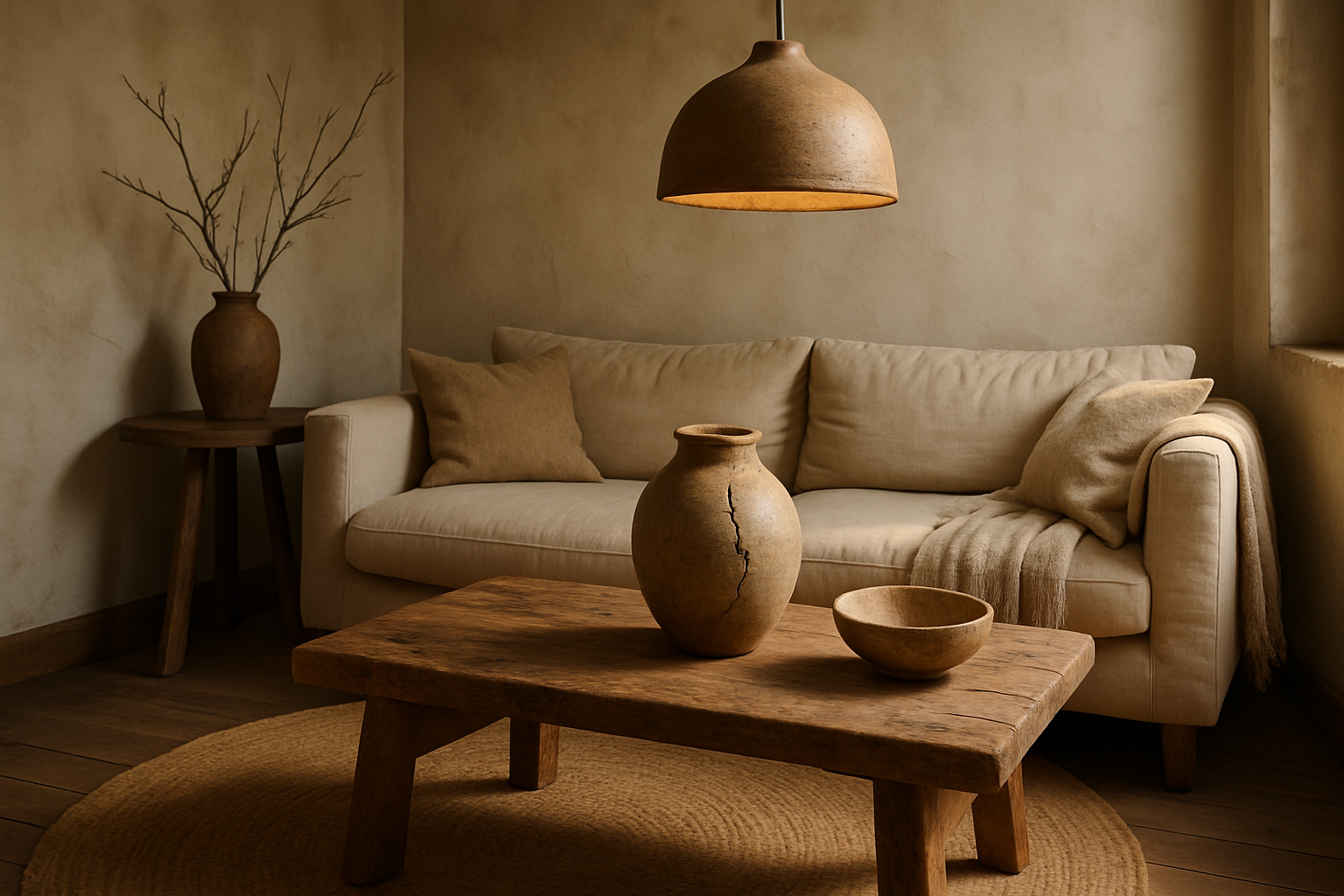The Allure of Wabi-Sabi: Embracing Imperfection in Home Design
The concept of wabi-sabi, a Japanese aesthetic philosophy that celebrates imperfection and transience, is quietly revolutionizing Western interior design. As homeowners seek alternatives to polished perfection, this ancient principle offers a refreshing approach to creating spaces that are both authentic and deeply comforting. Let's explore how wabi-sabi is reshaping our homes and our relationship with the objects within them.

Origins and Philosophy of Wabi-Sabi
Wabi-sabi has its roots in 16th century Japanese tea ceremonies, where simple, rustic tea huts and handmade utensils were preferred over ornate designs. The term combines two concepts: wabi, which refers to simplicity and humility, and sabi, which embodies the beauty that comes with age and wear.
This aesthetic philosophy emerged as a counterpoint to the opulence and perfection sought in earlier periods of Japanese history. It embraces the natural cycle of growth, decay, and death, finding profound beauty in the marks left by time and use.
Key Elements of Wabi-Sabi Design
Incorporating wabi-sabi into home design involves several key principles. Natural materials are paramount, with a preference for those that age gracefully, such as wood, stone, and clay. Textures play a crucial role, with rough, uneven surfaces celebrated for their tactile qualities and visual interest.
Color palettes in wabi-sabi interiors tend to be subdued and earthy, mirroring the hues found in nature. Neutral tones like beige, gray, and warm browns dominate, often accented with muted greens or deep blues.
Asymmetry and irregularity are embraced, challenging the Western preference for perfect symmetry. This might manifest in deliberately mismatched dining chairs or an off-center arrangement of wall art.
The Art of Curating Imperfection
One of the most challenging aspects of wabi-sabi for many Westerners is the idea of curating imperfection. This doesn’t mean simply allowing a space to become cluttered or unkempt. Rather, it involves thoughtful selection of items that show character and history.
Antiques and vintage pieces are often central to wabi-sabi interiors. A well-worn leather armchair, a cracked but beloved ceramic bowl, or a weathered wooden table all embody the wabi-sabi spirit. These items are valued not in spite of their imperfections, but because of them.
Handcrafted items also play a significant role. The slight irregularities in hand-thrown pottery or hand-woven textiles speak to the human touch and the beauty of craftsmanship.
Wabi-Sabi in Modern Spaces
While wabi-sabi has its roots in traditional Japanese aesthetics, it’s finding new expression in contemporary Western homes. Modern wabi-sabi interiors often blend minimalist principles with a softer, more lived-in feel.
In kitchens, this might manifest as open shelving displaying a collection of mismatched, handmade ceramics. Living rooms might feature low-slung furniture with natural upholstery, accented by hand-knotted rugs and softly rumpled linen throws.
Bathrooms are transformed into spa-like retreats with natural stone sinks, wooden bath mats, and handmade soap dishes. The goal is to create spaces that feel both serene and deeply personal.
The Psychological Benefits of Wabi-Sabi
Beyond its aesthetic appeal, wabi-sabi offers profound psychological benefits in our homes. In a culture that often equates perfection with success, wabi-sabi provides a much-needed antidote to the pressure of constant improvement.
By embracing imperfection in our living spaces, we create environments that are more forgiving and less stressful. There’s a liberation in knowing that a scratch on a table or a chip in a vase doesn’t diminish its value, but adds to its story.
Moreover, wabi-sabi encourages a deeper connection with our possessions. In a throwaway culture, it promotes an appreciation for objects that age well and improve with use. This can lead to more mindful consumption and a reduction in waste.
Implementing Wabi-Sabi in Your Home
For those intrigued by wabi-sabi, implementing this aesthetic doesn’t require a complete home overhaul. Start small by introducing natural materials and textures through accessories like linen cushions or wooden bowls.
Consider embracing the patina on metal surfaces rather than polishing them to a high shine. Allow wooden furniture to show its age gracefully instead of refinishing at the first sign of wear.
In the garden, wabi-sabi principles can guide you towards a more naturalistic approach. Allow plants to grow in their natural forms rather than heavily pruning them. Appreciate the beauty of fallen leaves or the moss growing on stone pathways.
The Future of Wabi-Sabi in Western Design
As our lives become increasingly digital and fast-paced, the appeal of wabi-sabi is likely to grow. Its emphasis on slowing down, appreciating natural processes, and finding beauty in imperfection offers a valuable counterbalance to the pressures of modern life.
We may see wabi-sabi principles influencing not just interior design, but also architecture and product design. Buildings that age gracefully and products designed to develop character over time could become more prevalent.
In embracing wabi-sabi, we’re not just adopting a design trend, but a different way of seeing the world. It’s an invitation to find beauty in unexpected places, to value authenticity over perfection, and to create homes that truly reflect the lives lived within them.




